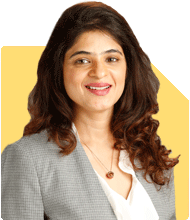wish to invest 1 cr MF or FD which is better
Ans: Investing 1 Crore in Mutual Funds or Fixed Deposits: A Detailed Analysis
Understanding Your Investment Goals
When you have Rs 1 crore to invest, it's crucial to understand your financial goals. Are you seeking growth, safety, or a balance of both? Identifying your objectives is the first step towards making an informed decision.
Evaluating Fixed Deposits
Fixed Deposits (FDs) are a popular investment choice in India. They offer a fixed rate of return over a specified period, which appeals to many investors due to the predictability and safety they provide.
Safety and Stability
FDs are considered very safe. The principal amount is secure, and the returns are guaranteed. This makes FDs suitable for conservative investors who prefer low risk.
Returns and Inflation Impact
However, the returns on FDs are relatively low. Currently, FD interest rates range from 5-7% per annum. When accounting for inflation, which averages around 5-6%, the real return is minimal. This can erode the purchasing power of your investment over time.
Exploring Mutual Funds
Mutual Funds (MFs) pool money from many investors to invest in various assets. These can include stocks, bonds, and other securities. MFs offer different schemes catering to diverse investment needs, making them a versatile investment option.
Potential for Higher Returns
Mutual Funds have the potential to offer higher returns compared to FDs. Equity Mutual Funds, for instance, can deliver 12-15% returns over the long term. This can significantly grow your investment over time.
Diversification
Mutual Funds provide diversification by investing in a mix of assets, which spreads risk. This reduces the impact of poor performance in any single investment. Diversification is a key strategy for managing risk and enhancing returns.
Professional Management
Mutual Funds are managed by professional fund managers. These experts analyze market trends and make informed decisions to maximize returns while managing risk. Their expertise can be beneficial, especially for those who lack the time or knowledge to manage investments actively.
Tax Efficiency
Mutual Funds also offer tax advantages. For instance, long-term capital gains from equity mutual funds are taxed at 10% for gains above Rs 1 lakh, which is lower than the tax on interest income from FDs, taxed at the individual's marginal tax rate.
Flexibility and Liquidity
Mutual Funds offer flexibility with various schemes based on your risk appetite and investment horizon. They also provide liquidity, allowing you to redeem your investment easily when needed, subject to exit loads and taxes. This flexibility is advantageous for managing financial needs and emergencies.
Types of Mutual Funds: Debt, Hybrid, and Equity
Mutual Funds come in various types, each serving different investment goals and risk appetites. Understanding these can help you make a more informed decision.
Debt Mutual Funds
Debt Mutual Funds invest in fixed-income securities like bonds, government securities, and corporate debt. They are less risky compared to equity funds and provide steady returns. They are ideal for conservative investors seeking regular income with lower risk.
Hybrid Mutual Funds
Hybrid Mutual Funds invest in a mix of equity and debt instruments. They offer a balance of growth and stability. This makes them suitable for moderate investors looking for a blend of income and capital appreciation. Hybrid funds can adjust the equity-debt ratio based on market conditions, providing flexibility and adaptability.
Equity Mutual Funds
Equity Mutual Funds invest primarily in stocks. They carry higher risk but have the potential for substantial returns over the long term. They are suitable for aggressive investors with a high-risk tolerance and a long-term investment horizon. Equity funds can deliver significant capital appreciation, making them ideal for wealth creation.
Actively Managed Funds vs Index Funds
You might be considering Index Funds. However, there are disadvantages to them. Index Funds merely track a market index and do not aim to outperform it, which means they can perform poorly during market downturns.
Benefits of Actively Managed Funds
Actively managed funds, on the other hand, aim to outperform the market. Fund managers actively make investment decisions to achieve this goal. This can lead to better returns, especially in volatile markets. Their ability to adjust strategies based on market conditions can be a significant advantage.
Direct Funds vs Regular Funds
If you are thinking about direct funds, it's essential to understand their drawbacks. Direct funds require you to manage the investment yourself, which can be challenging without sufficient knowledge and time.
Benefits of Regular Funds through a Certified Financial Planner
Regular funds involve a Certified Financial Planner (CFP). A CFP can provide valuable advice and guidance, helping you choose the right funds based on your goals and risk tolerance. This professional support can enhance your investment strategy and outcomes, ensuring you make informed decisions.
Reassessing LIC, ULIP, and Investment-cum-Insurance Policies
If you hold LIC, ULIP, or investment-cum-insurance policies, reconsider them. These products often offer lower returns compared to mutual funds. Surrendering these policies and reinvesting in mutual funds can be more beneficial. Mutual funds typically provide higher returns and greater flexibility.
Analyzing Risks
All investments carry some risk. FDs have low risk but offer low returns. Mutual funds carry higher risk but offer the potential for higher returns. Understanding and accepting this risk-return trade-off is crucial for making informed investment decisions.
Considering Market Volatility
Market volatility is a concern for many investors. Mutual funds, especially equity funds, can be volatile in the short term. However, over the long term, they tend to deliver strong returns. Staying invested and not reacting to short-term market fluctuations is essential for achieving your financial goals.
Importance of Time Horizon
Your investment horizon plays a significant role. For short-term goals, FDs might be suitable due to their stability. For long-term goals, mutual funds are preferable. They can leverage the power of compounding to grow your wealth substantially over time.
Strategic Asset Allocation
A well-thought-out asset allocation strategy is vital. This involves dividing your investment among different asset classes. For instance, a mix of equity, debt, and hybrid mutual funds can provide growth and stability. This diversified approach can help you achieve your financial goals more efficiently and reduce overall risk.
Regular Monitoring and Rebalancing
Investing is not a one-time activity. Regularly monitoring your investment and rebalancing your portfolio is important. This ensures your investment remains aligned with your goals and risk tolerance. A Certified Financial Planner can assist in this process, offering professional advice and adjustments as needed.
Understanding Your Risk Tolerance
Everyone has a different risk tolerance. Assessing your comfort with risk is essential. This helps in choosing the right investment options. Mutual funds offer schemes catering to various risk levels, from conservative to aggressive, allowing you to align your investments with your risk appetite.
Role of Economic Factors
Economic factors like interest rates, inflation, and market conditions impact investments. FDs are sensitive to interest rate changes, while mutual funds are influenced by market dynamics. Understanding these factors helps in making informed investment decisions and adapting to changing economic environments.
Comparing Liquidity
Liquidity is the ease of converting an investment into cash. FDs have a fixed tenure and might incur penalties for early withdrawal. Mutual funds offer higher liquidity, allowing you to redeem them at any time, subject to exit loads and taxes. This flexibility is advantageous for managing financial needs and emergencies.
Assessing Historical Performance
Evaluating the historical performance of mutual funds is crucial. Past performance is not a guarantee of future returns, but it provides insights into the fund's consistency and management quality. Reviewing performance over different market cycles helps in selecting reliable funds and understanding potential risks and rewards.
Impact of Market Cycles
Market cycles affect investment returns. During bull markets, mutual funds can deliver impressive returns. In bear markets, they may underperform. Staying invested through different market phases is key to achieving long-term growth. This resilience can lead to substantial wealth accumulation over time.
Professional Guidance
Navigating the investment landscape can be complex. Professional guidance from a Certified Financial Planner (CFP) is invaluable. They provide personalized advice based on your financial situation, goals, and risk tolerance. This expert support enhances your investment strategy and confidence, ensuring you make informed and strategic decisions.
Advantages of Regular Investments
Investing regularly, rather than a lump sum, can be beneficial. Systematic Investment Plans (SIPs) in mutual funds allow you to invest small amounts regularly. This strategy averages out the purchase cost and mitigates market volatility. It instills financial discipline and helps in building a substantial corpus over time.
Emotional Aspect of Investing
Investing involves emotions. Fear and greed can influence investment decisions. It's important to remain disciplined and avoid making impulsive decisions based on market movements. A Certified Financial Planner (CFP) can help you stay focused on your long-term goals, providing emotional support and rational advice during volatile market periods.
Reviewing Financial Goals
Periodically reviewing your financial goals is essential. Life circumstances and priorities change over time. Regularly assessing and adjusting your investment strategy ensures it remains aligned with your evolving needs and aspirations. This ongoing evaluation helps in staying on track to achieve your financial objectives.
Importance of Financial Literacy
Enhancing your financial literacy is beneficial. Understanding basic investment concepts empowers you to make informed decisions. It also helps in evaluating professional advice and staying engaged with your investment journey. Various resources, including books, online courses, and financial seminars, can aid in improving financial knowledge and confidence.
Benefits of Mutual Funds for Retirement Planning
Mutual funds are an excellent option for retirement planning. They offer growth potential to build a substantial retirement corpus. By investing in a mix of equity, debt, and hybrid funds, you can balance growth and stability. This ensures a comfortable and financially secure retirement, providing you with peace of mind and financial independence.
Impact of Global Events
Global events can impact investments. Factors like geopolitical tensions, economic policies, and global market trends influence returns. Staying informed about global developments and their potential impact helps in making prudent investment decisions. A well-diversified mutual fund portfolio can mitigate some of these risks and provide stability.
Importance of Emergency Fund
Having an emergency fund is crucial. It provides a financial cushion during unforeseen events. Before making significant investments, ensure you have a sufficient emergency fund. This prevents the need to liquidate long-term investments during emergencies, ensuring your financial plan remains intact and your long-term goals are not compromised.
Final Insights
Investing Rs 1 crore is a significant decision. Fixed Deposits offer safety and predictability but limited growth. Mutual Funds, with their potential for higher returns, diversification, and professional management, present a compelling option.
Understanding your goals, risk tolerance, and investment horizon is key. Regular monitoring, professional guidance, and staying informed enhance your investment journey. Remember, a well-planned investment strategy can lead to substantial wealth creation and financial security.
Best Regards,
K. Ramalingam, MBA, CFP,
Chief Financial Planner,
www.holisticinvestment.in
























